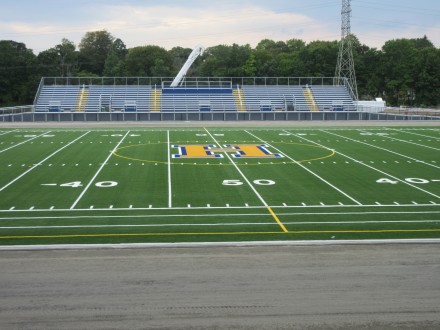
The new Harding High School under construction off Boston Avenue to replace the antiquated structure built more than 90 years ago is the subject of a commentary by city financial observer John Marshall Lee who wonders about the price tag then and the cost now.
Bridgeport has been trying to improve the buildings in which education is supposed to happen. During the past decade about $700 Million has been spent in upgrading the school buildings all over the City. I have no idea what has been spent on jails within the City during that time period, perhaps because that is a State of CT function. I do know that operating all the buildings with professionals and other staff through the school year has become more contentious and desperate for revenues than before. And I have seen evidence at high school graduations where females processing to receive their diplomas outnumber males by about half.
Building schools is a business and roughly speaking the State has been paying about 80% of construction while the City has bonded its 20% share over 20-year periods. It’s a business with competition and provides jobs at a living wage. The governance process is neither particularly open nor public unfortunately. Even though three members of the City Council sit on the School Building Committee (SBC) they neither issue a report, allow general public to speak, nor even share what is ongoing with any City Council subcommittee. Tough to find the archives for old minutes and agendas.
You may well ask why this is so. Historically, you might ask James Holloway, longest serving Councilman, who has held down a SBC seat until very recently. He departed, he says, because of a conflict of interest since he reports to John Ricci, head of Public Facilities, who also is responsible for those hired from O&G to supervise school projects. Seems curious to me, how a City employee and Council person can serve for years without seeing a conflict of interest present, now observes such.
General Electric left the City decades ago and their HQ left Fairfield for Boston this year. But land was conveyed to the City for a new Harding HS. (There has been extensive testing, remediation, discussion and evidence to indicate that concern about the new Harding property has been converted to residential standards.) The price tag was expected to come in around $81 Million and the final numbers were approximately $76 Million. Change orders that cancel out original plans and require new designs and/or expense happen at times in most projects. Not so far at Harding HS. What has happened is a person supervising the project for the City, an employee formerly of the contractor O&G, has suggested multiple changes to decrease the unique character of the building that will be home to secondary students for the next 50-70 years. The design elements removed made Harding more like a public shopping area or other public building downtown than a concrete block security structure.
What is going on here? If design elements including walls, finishes, and hardware are eliminated or downgraded, expenses would be decreased, but who wins if the project is already on budget? Such deletions may free up funds that would ordinarily be settled at the end of a build. But is a contractor at project end likely to allow refunds to the State and City of dollar for dollar or the more likely route of ten cents on the dollar? In the latter case the Contractor keeps the dollar and can do anything they wish with it.
There is a local Mayor who is working hard to run for Governor. He has aides knocking on many, many doors looking for financial support for his run. Would contractors working on school or other government projects be prospects for such requests? Perhaps those lists should be checked.
There is a unique amphitheater and stage design allowing indoor and outdoor performance that will be attractive to the entire community beyond the school. Distinctive handrails that are not steel, and design tiles bringing life and color inside need not be lost as they humanize. These matters need review and defense if necessary by the people who were paid to design, review and approve rather than one individual late in the process who seems on a mission to “cut expense” in the name of maintenance issues, safety, or student modesty. What is the real motivation? How do we get to community win-win-win? Time will tell.


My title for this essay was eliminated. “Have You Heard About The School to Prison Pipeline?” My point is that much of the unique design elements were being eliminated or “designed down” in order to save expense, but what was the need for the savings and who would benefit? If designing down occurs will the school loose is attractive presentation and be more like a State prison? Why hasn’t more information on the way public dollars are spent made more available? Time will tell.
IMHO..the big picture issues raised in JML’s commentary is that getting information in Bridgeport,The Government of The City of Bridgeport,is extremely hard to get and find and therefore make a decision. City Hall and The Annex(All Executive departments-The Mayor etc etc) continue a policy of offering the least amount of information and require the greatest amount of effort to get information. The People of Bridgeport are blind-sided by City Hall,The Annex,and the PRESENT City Council.